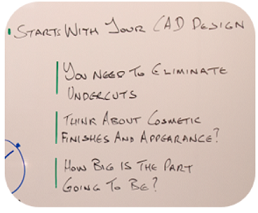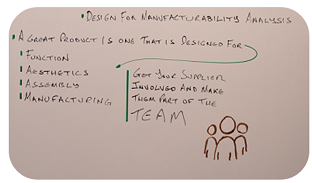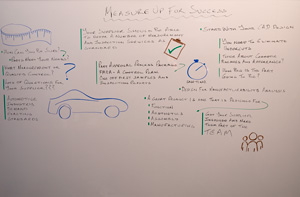
Measure Up For Success - Detailed Measurement And Inspection Reporting
Your masterclass in product design and development
Protolabs’ Insight video series
Our Insight video series will help you master digital manufacturing.
Every Friday we’ll post a new video – each one giving you a deeper Insight into how to design better parts. We’ll cover specific topics such as choosing the right 3D printing material, optimising your design for CNC machining, surface finishes for moulded parts, and much more besides.
So join us and don’t miss out.
Insight: Measure Up For Success - Detailed Measurement And Inspection Reporting
Transcript
Hello and welcome to Protolabs' Insight video series.
Let’s dive straight into this week’s topic.
How can you be sure that the injection moulded parts that you have designed will meet your needs after production? What measurement or quality control measures should you expect from your supplier and what should you do to help ensure that they get it right?
So, lots of questions for your supplier, but hey it’s important.
Let’s start by flipping the production story and looking at what you want, a production part that meets your needs. We’ll explore measurement checks and reports that you need to validate this. And we’ll also examine how good design and involving your supplier can help you achieve this end goal.

A lot of this demand for accurate quality control has come from the automotive industry who demand exacting standards. And quite right too.
Your supplier should be able to offer a number of measurement and inspection services as standard. These range from part approval quality documentation, to detailed dimensional inspection reports. How quickly you will get these depends on the complexity of the part, the production volume and what you need.

Generally, you should expect a quality inspection report as part of the normal injection moulding process.
It’s worth checking that they can also supply a detailed measurement report, but ask how they achieve this. They should use a co-ordinate measurement machine that will include an unlimited number of dimensions.
And finally, if you need it, can they produce the documents needed for a Part Approval Process Package? These are standardised processes requiring a number of steps such as process FMEA, a control plan, one off first samples and inspection reports.

Clearly the need for part measurement and process control is vital, but having the control processes and measurement in place will not on its own achieve a part that is good for manufacturing.
The process starts from when you are sitting in front of your computer on the first CAD design.
Get the design wrong and all you are doing is accurately measuring errors. It’s not where any of us want to be.
There are a number of things that you should consider when you are designing a part for injection moulding.

You need to eliminate undercuts.
Ask yourself whether you really need all of the features in your design?
Think about cosmetic finishes and appearance.
And how big is the part going be?
Folks I’m not going to go into great detail on this because we deal with it in the ‘injection moulding costs’ video. I urge you to go and take a look. It’s hosted right here on the same page.
Suffice to say that your supplier can help you with the CAD design. Once you have submitted it, they should provide you with a design for manufacturability analysis. Having said that, if you get the design right at the first go, then you are going to save yourself some valuable time.

A great product is one that is designed for function, aesthetics, assembly and manufacturing. Small things like painting or plating the part will affect its geometry. It may seem obvious, but the devil really is in the detail.
Design for manufacturing will minimise costly mistakes later on in production. And with injection moulding, there are a lot of things that need considering.
Your supplier is aware of these variables, so include them in your planning from the beginning. They can advise on what materials and processes will work.
Of course, you can prototype your concept or part in order to fine tune it, and again your supplier should get involved in this; but no engineer works solely on the basis of trial and error to get to the finished product.
We engineers are by nature planners and very particular about what we want. If you work with your supplier from day one then they will own the process with you. You can effectively expand your team. It is after all the nature of a modern supply chain.
Let’s quickly recap. Measurement and reporting are vital if you are outsourcing production for injection moulding. Check exactly what your supplier offers and that it aligns with your needs.
But also remember that to get the quality of final part that you need, you must design for manufacture right from the beginning. Get your supplier involved and make them part of your team because they can add specialist expertise that you will find invaluable.
That’s it for this video. I hope you found that useful.
Next time we are going to change tack and explore how you can now design copper parts that were once impossible. Join us to find out how 3D printing this metal has opened up new opportunities for design engineers.
Until next week.
With special thanks to Natalie Constable.











